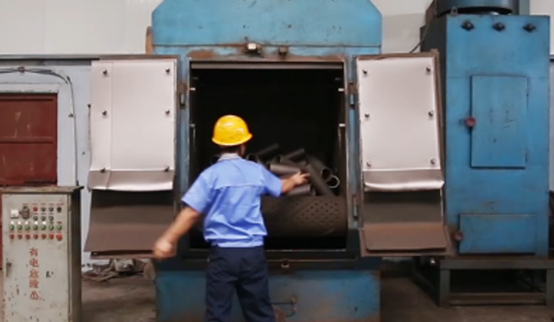 Afrikaans
Afrikaans  Albanian
Albanian  Amharic
Amharic  Arabic
Arabic  Armenian
Armenian  Azerbaijani
Azerbaijani  Basque
Basque  Belarusian
Belarusian  Bengali
Bengali  Bosnian
Bosnian  Bulgarian
Bulgarian  Catalan
Catalan  Cebuano
Cebuano  Corsican
Corsican  Croatian
Croatian  Czech
Czech  Danish
Danish  Dutch
Dutch  English
English  Esperanto
Esperanto  Estonian
Estonian  Finnish
Finnish  French
French  Frisian
Frisian  Galician
Galician  Georgian
Georgian  German
German  Greek
Greek  Gujarati
Gujarati  Haitian Creole
Haitian Creole  hausa
hausa  hawaiian
hawaiian  Hebrew
Hebrew  Hindi
Hindi  Miao
Miao  Hungarian
Hungarian  Icelandic
Icelandic  igbo
igbo  Indonesian
Indonesian  irish
irish  Italian
Italian  Japanese
Japanese  Javanese
Javanese  Kannada
Kannada  kazakh
kazakh  Khmer
Khmer  Rwandese
Rwandese  Korean
Korean  Kurdish
Kurdish  Kyrgyz
Kyrgyz  Lao
Lao  Latin
Latin  Latvian
Latvian  Lithuanian
Lithuanian  Luxembourgish
Luxembourgish  Macedonian
Macedonian  Malgashi
Malgashi  Malay
Malay  Malayalam
Malayalam  Maltese
Maltese  Maori
Maori  Marathi
Marathi  Mongolian
Mongolian  Myanmar
Myanmar  Nepali
Nepali  Norwegian
Norwegian  Norwegian
Norwegian  Occitan
Occitan  Pashto
Pashto  Persian
Persian  Polish
Polish  Portuguese
Portuguese  Punjabi
Punjabi  Romanian
Romanian  Russian
Russian  Samoan
Samoan  Scottish Gaelic
Scottish Gaelic  Serbian
Serbian  Sesotho
Sesotho  Shona
Shona  Sindhi
Sindhi  Sinhala
Sinhala  Slovak
Slovak  Slovenian
Slovenian  Somali
Somali  Spanish
Spanish  Sundanese
Sundanese  Swahili
Swahili  Swedish
Swedish  Tagalog
Tagalog  Tajik
Tajik  Tamil
Tamil  Tatar
Tatar  Telugu
Telugu  Thai
Thai  Turkish
Turkish  Turkmen
Turkmen  Ukrainian
Ukrainian  Urdu
Urdu  Uighur
Uighur  Uzbek
Uzbek  Vietnamese
Vietnamese  Welsh
Welsh  Bantu
Bantu  Yiddish
Yiddish  Yoruba
Yoruba  Zulu
Zulu Key Elements of a Belt Conveyor System and Their Functions
Components of a Belt Conveyor System
A belt conveyor system is an essential part of modern material handling and transport systems, used extensively in various industries to facilitate the efficient movement of goods and materials. Understanding its components is crucial for the effective design, maintenance, and operation of these systems. This article covers the primary components of a belt conveyor system, highlighting how each plays a pivotal role in its overall functionality.
1. Belt
The primary component of any belt conveyor system is the belt itself. Typically made from materials such as rubber, fabric, or plastic, the belt serves as the medium that carries the load. It is designed to be durable, resistant to wear, and capable of withstanding the specific environmental conditions it will face during operation. The choice of belt material affects the conveyor's capacity, speed, and the types of materials it can transport.
2. Pulley
Pulleys are cylindrical devices used to change the direction of the belt and are often found at both ends of the conveyor system. There are different types of pulleys, including drive pulleys that are powered by motors and return pulleys that support the belt on its return journey. The pulley design and size play a crucial role in the overall efficiency and effectiveness of the conveyor system, influencing factors such as belt tension and alignment.
3. Idlers
.
Idlers are supportive rollers placed along the length of the conveyor. They provide support for the belt and ensure that it maintains proper alignment while minimizing friction as the belt moves. Idlers are typically categorized into different types, including troughing idlers, which are used to support bulk materials, and return idlers, which support the belt on its return path. The selection of appropriate idlers is essential for reducing wear and extending the life of the belt.
components of belt conveyor system

4. Drive Motor
The drive motor is the powerhouse of the belt conveyor system. It provides the necessary force to drive the belt and moves the load. Depending on the application, different types of motors may be used, such as AC or DC motors. The choice of motor has implications for speed, torque, and operational efficiency. Motors are often paired with gear reducers to optimize the performance of the conveyor system, ensuring that it operates smoothly under load.
5. Frame
The frame is the structural backbone of the belt conveyor system, supporting all other components. Typically made from steel or aluminum, the frame must be robust enough to withstand the weight of the system and the materials it carries. A well-designed frame ensures stability, minimizes vibrations, and contributes to the overall durability of the conveyor.
6. Control Systems
Modern belt conveyor systems are often equipped with advanced control systems that enable precise operation. These systems may include sensors to monitor belt speed, load weight, and other critical parameters. Control panels allow operators to manage the conveyor's operation, enhancing safety and efficiency.
Conclusion
In conclusion, a belt conveyor system is comprised of several critical components, each contributing to its overall functionality and efficiency. From the belt and pulleys to idlers, drive motors, frames, and control systems, understanding these elements is essential for anyone involved in the design, operation, or maintenance of such systems. By appreciating how these components work together, businesses can ensure smoother operations and increased productivity in their material handling processes.
-
Revolutionizing Conveyor Reliability with Advanced Rubber Lagging PulleysNewsJul.22,2025
-
Powering Precision and Durability with Expert Manufacturers of Conveyor ComponentsNewsJul.22,2025
-
Optimizing Conveyor Systems with Advanced Conveyor AccessoriesNewsJul.22,2025
-
Maximize Conveyor Efficiency with Quality Conveyor Idler PulleysNewsJul.22,2025
-
Future-Proof Your Conveyor System with High-Performance Polyurethane RollerNewsJul.22,2025
-
Driving Efficiency Forward with Quality Idlers and RollersNewsJul.22,2025





























